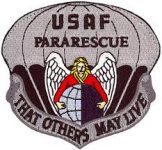Thanksgiving
Thanksgiving is a U.S. holiday celebrated on the 4th Thursday of November. Traditionally, all families gather around the dinner table to a great feast with corn, cranberry sauce, stuffing, and turkey. At the table, they give thanks to God (YaHVaH) for all the blessings they have received for the year.
The tradition started during the time of the founding of the U.S. colonies. The story goes that after a difficult year, the colonists were thankful they had survived. They held a feast where they invited their American Indian friends who brought food only found in America at that time (corn and turkey).
From Wikipedia we get this about the first Thanksgiving:
Harvest festival observed by the Pilgrims at Plymouth
The most prominent historic thanksgiving event in American popular culture is the 1621 celebration at the Plymouth Plantation, where the settlers held a harvest feast after a successful growing season. Autumn or early winter feasts continued sporadically in later years, first as an impromptu religious observance and later as a civil tradition.[Wikipedia]
The Plymouth settlers, known as Pilgrims, had settled in land abandoned when all but one of the Patuxet Indians died in a disease outbreak. After a harsh winter killed half of the Plymouth settlers, the last surviving Patuxet, Squanto (who had learned English and avoided the plague as a slave in Europe), came in at the request of Samoset, the first Native American to encounter the Pilgrims. Squanto taught the Pilgrims how to catch eel and grow corn and served as an interpreter for them until he too succumbed to the disease a year later. The Wampanoag leader Massasoit also gave food to the colonists during the first winter when supplies brought from England were insufficient.[Wikipedia]
The Pilgrims celebrated at Plymouth for three days after their first harvest in 1621. The exact time is unknown, but James Baker, the Plimoth Plantation vice president of research, stated in 1996, “The event occurred between Sept. 21 and Nov. 11, 1621, with the most likely time being around Michaelmas (Sept. 29), the traditional time.”[22] Seventeenth-century accounts do not identify this as a Thanksgiving observance, rather it followed the harvest. It included 50 people who were on the Mayflower (all who remained of the 100 who had landed) and 90 Native Americans. The feast was cooked by the four adult Pilgrim women who survived their first winter in the New World (Eleanor Billington, Elizabeth Hopkins, Mary Brewster, and Susanna White), along with young daughters and male and female servants.[Wikipedia]
Two colonists gave personal accounts of the 1621 feast in Plymouth. The Pilgrims, most of whom were Separatists (English Dissenters), are not to be confused with Puritans, who established their own Massachusetts Bay Colony on the Shawmut Peninsula (current day Boston) in 1630.[24][25] Both groups were strict Calvinists, but differed in their views regarding the Church of England. Puritans wished to remain in the Anglican Church and reform it, while the Pilgrims wanted complete separation from the church.[Wikipedia]
William Bradford, in Of Plymouth Plantation wrote:
They began now to gather in the small harvest they had, and to fit up their houses and dwellings against winter, being all well recovered in health and strength and had all things in good plenty. For as some were thus employed in affairs abroad, others were exercised in fishing, about cod and bass and other fish, of which they took good store, of which every family had their portion. All the summer there was no want; and now began to come in store of fowl, as winter approached, of which this place did abound when they can be used (but afterward decreased by degrees). And besides waterfowl there was great store of wild turkeys, of which they took many, besides venison, etc. Besides, they had about a peck a meal a week to a person, or now since harvest, Indian corn to the proportion. Which made many afterwards write so largely of their plenty here to their friends in England, which were not feigned but true reports.
Of Plymouth Plantation on Wikipedia
Edward Winslow, in Mourt’s Relation wrote:
Our harvest being gotten in, our governor sent four men on fowling, that so we might after a special manner rejoice together after we had gathered the fruits of our labor. They four in one day killed as much fowl as, with a little help beside, served the company almost a week. At which time, amongst other recreations, we exercised our arms, many of the Indians coming amongst us, and among the rest their greatest king Massasoit, with some ninety men, whom for three days we entertained and feasted, and they went out and killed five deer, which we brought to the plantation and bestowed on our governor, and upon the captain and others. And although it be not always so plentiful as it was at this time with us, yet by the goodness of God, we are so far from want that we often wish you partakers of our plenty.
Mourt’s Relation on Wikipedia
Return to weekly-commentary








